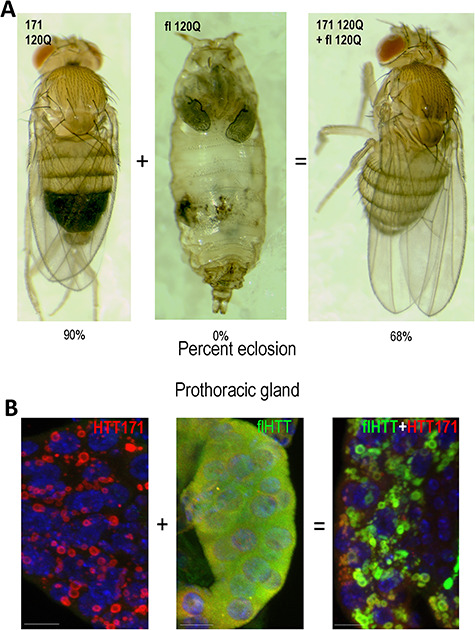Figure 2.

Co-expression of HTT171 with pathogenic fl-mHTT suppresses multiple pathogenic events. (A) When expressed ubiquitously with da > Gal4 at 25°, 90% of HTT171-120Q survive to adulthood (left panel) while 0% of fl-mHTT (55C) expressing flies survive (center panel). However, co-expression of fl plus 171 suppresses the lethality, raising the survival from 0 to 68% when ubiquitously expressed. The pupa in the center panel (fl 120Q) shows a typical cryptocephal phenotype. (B) When co-expressed, toxic fl-mHTT is sequestered into non-toxic HTT171 aggregates. Prothoracic glands expressing either HTT171-120Q or fl-mHTT or both (flHTT+HTT171) were stained with an N-terminal HTT antibody (red) and a C-terminal HTT antibody (green) and DAPI to reveal nuclei (blue). The left panel expressing HTT171 alone reveals a strongly aggregated N-terminal signal and noC-terminal signal. The center panel expressing fl-mHTT alone reveals a strong diffuse cytoplasmic C-terminal HTT signal (green) as well as diffuse N-terminal signal (red). In the right panel, a PG co-expressing HTT171 and fl-mHTT reveals that the previously diffuse fl signal is now co-localized with aggregated HTT171. Scale bars are 2 μm.
